What I Have Been Up To
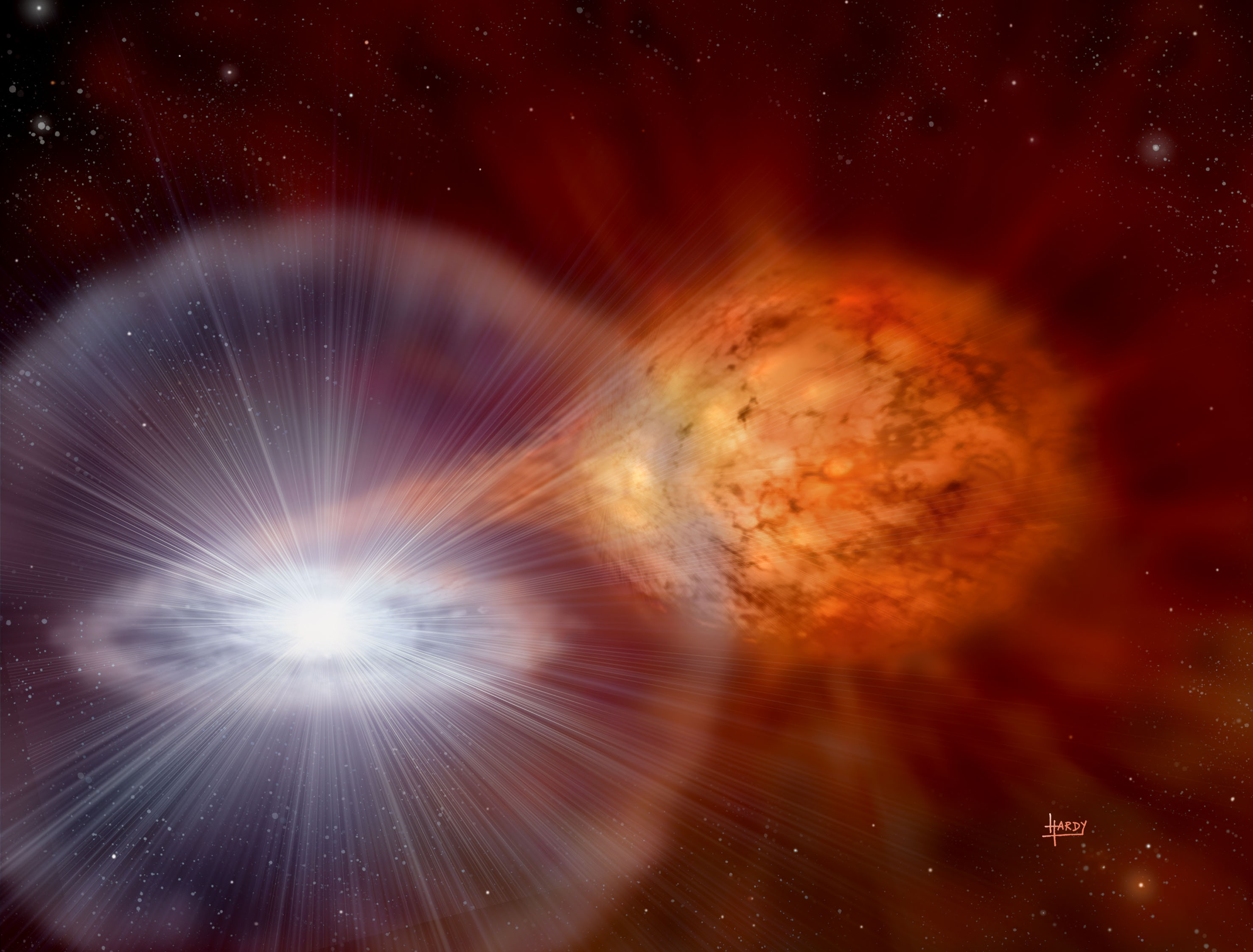 Image credit: Chsistopher Hardy/PPARC
Image credit: Chsistopher Hardy/PPARC
I am currently a postdoctoral research associate at Michigan State University in the Department of Physics and Astronomy working with Professor Laura Chomiuk. I use radio telescopes to study novae, thermonuclear runaway explosions on the surface of white dwarf stars. We recently found intriging evidence that GeV gamma-rays originate in novae due to the interactions being the material ejected from the white dwarf and the hosting binary system. Our discoveries were published in the journal Nature. The research was also picked up in press releases from the NRAO, Sky and Telescope, and astronomy.com.
I successfully defended my dissertation and graduated with a Ph.D. in Physics in Decemeber 2012. My thesis project involved studying the parsec-scale properties of gamma-ray emitting blazars with the Very Long Baseline Array (VLBA), operated by the National Radio Astronomy Observatory (NRAO). I also used data provided by the Fermi Gamma-ray Space Telescope operated by NASA. My dissertation advisor was Gregory Taylor. My research was supported by both NRAO and NASA, with some additional support from the Naval Research Laboratory and Los Alamos National Laboratory. As a graduate student, I also assisted with construction and operations of the Long Wavelength Array.
I have also done work with radio transients.
In late 2010, I helped monitor a recent outburst from a galactic black hole known
as MAXI J1659-152. The effort was led by Alexander van der Horst from NASA. I
was responsible for calibrating, reducing, and analyzing EVLA observations of the
source. See ATEL
#2918. The group also recently presented some of our results at the 12th
meeting of the AAS High Energy Astrophysics Division.
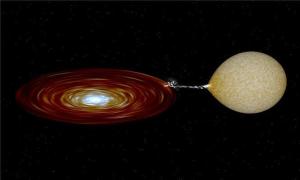 Image credit: Jesus Corral Santan (IAC)
Image credit: Jesus Corral Santan (IAC)
The above image is an artist's depiction of a small black hole accreting material from a companion star. If a sudden increase in the accretion rate occurs, the material around the black hole becomes extremely hot, magnetic fields form and strenghten, jets of material shoot out above and below the accretion disk, and the system becomes very bright in several bands of the electromagnetic spectrum. This kind of object has many names: black-hole binary, X-ray binary, and microquasar.
In mid 2011, I helped monitor the Crab pulsar (which is located in the Crab Nebula) at radio wavelengths after a flare was detected in gamma-rays, That effort was led by Teddy Cheung of NASA's Goddard Spaceflight Center. Again, I was responsible for calibrating, reducing, and analyzing VLA data. Our results are currently being incorporated into studies at other wavelengths (X-ray and optical). A paper on these observations was published in The Astrophysical Journal.
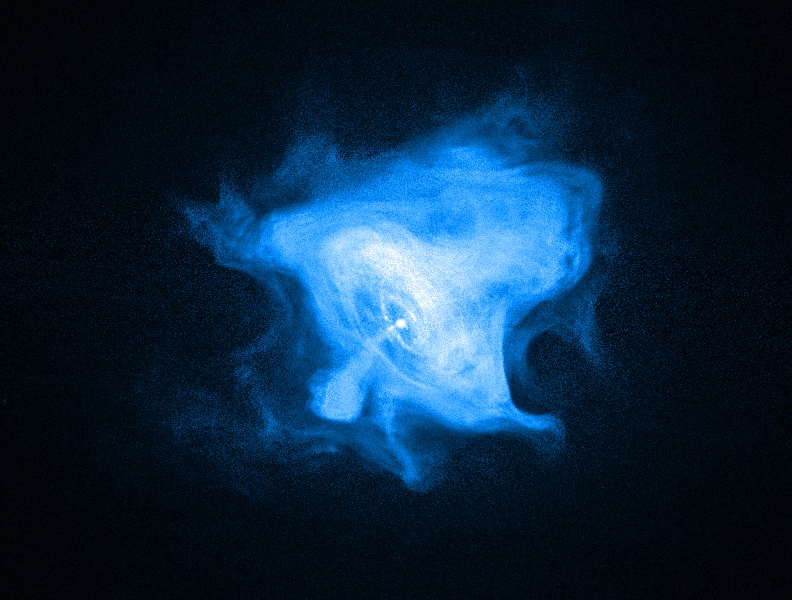
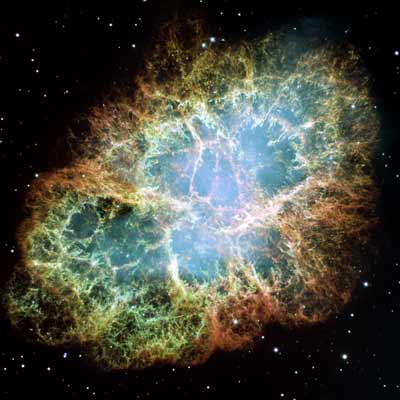
(LEFT) Chandra (X-ray) image of the Crab pulsar wind. Image credit: NASA, CXC, SAO, F.D. Seward, W.H. Tucker, R.A. Fesen
(RIGHT) Hubble image of the Crab nebula (mosiac). Image credit: NASA, ESA, J. Hester, A. Loll (ASU), and acknowledgement to David De Martin (Skyfactory)
The Crab Nebula is the remnant of a star that exploded (i.e., a supernova) in 1054. In the center is a pulsar; a super-dense neutron star which rotates very fast and has an incredibly strong magnetic field. The magnetic field is misaligned from its rotation access. Electrons get swept up by this field and are accelerated, causing them to emit light (mostly in the radio band). As the magnetic field sweeps past Earth, we detect a pulse of radio emission (hence, "pulsar"). Occasionally, there is an extra-large burst of radiation from the pulsar, which is what we were monitoring in mid 2011.
In mid 2011, about the same time I was helping with the Crab pulsar program, Phil Kronberg of Los Alamos National Laboratory (LANL) asked me to help him with some rotation measure data on the AGN 3C303. He was kind enough to give me an acknowledgement in his paper "Measurement of the Electric Current in a kpc-Scale Jet" (Kronberg, P.P., Lovelace, R.V.E., Lapenta, G., and Colgate, S.A. 2011, ApJL, 741, L15).
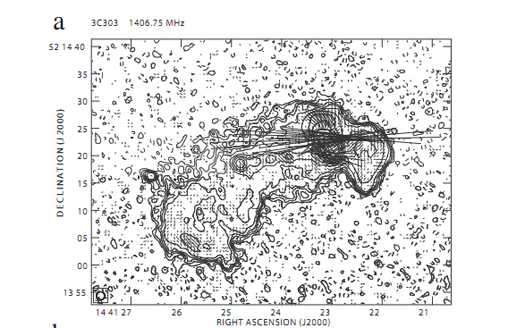 Figure from Dr. Kronberg's paper.
Figure from Dr. Kronberg's paper.